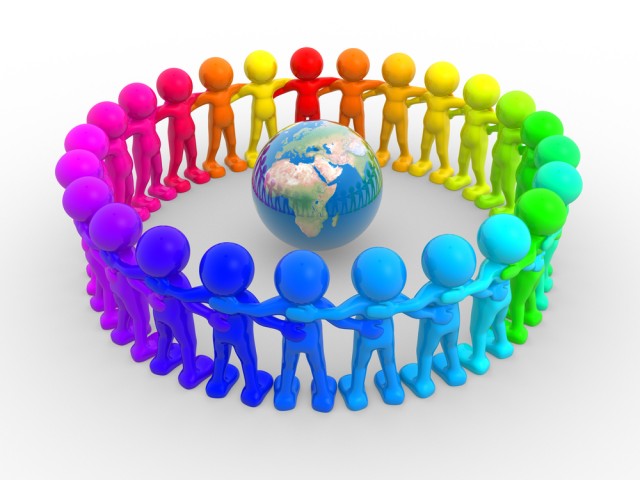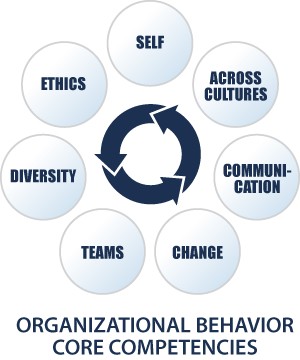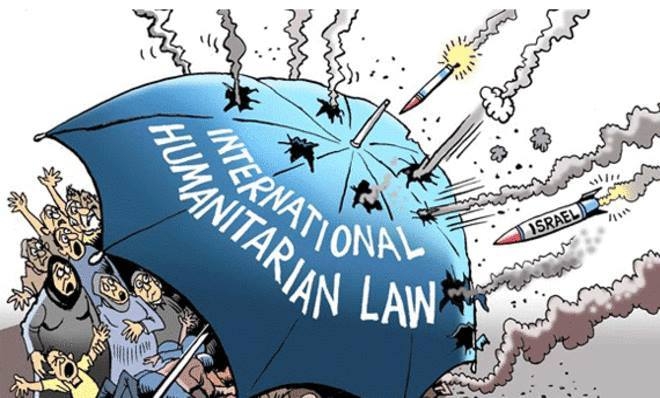Effects of Multicultural Diversity Organizational Processes
Managing a multinational corporation requires one to understand different cultures that comprise the subordinate staff. This is because different cultural backgrounds promote different social communication skills that define personal relationship amongst members of a certain workgroup. Thus, Members in a heterogeneous group consisting of employees sourced from different cultural backgrounds have the ability to generate diverse ideas that can help streamline organizational strategies. This benefits the organization by improving and enhancing communication links within organizations. Information is thus shared freely amongst the subordinate staff of the organization. Predominantly male or female oriented workgroups suffer from intra-gender conflicts as competition for supremacy in the group disrupts communications within the entire organization. This because power and role struggles dominates relationships between employees as they seek favors from their senior managers hoping to be rewarded with promotions or pay rises. This presents barriers to effective communication hindering the flow of the necessary organization processes pivotal to the business as a separate entity.
According to Hofstede, a manager in charge of such an organization should strive to understand how the subordinates relate to each other culturally before grouping them together to perform a certain task. In addition, it is important for a manager to understand how cultural beliefs affect employee’s judgment towards organizational issues to align the organization goals focused on meeting their personal needs. Thus, the paper will focus on how multicultural diversity affects organizational processes in a Multinational Corporation such as Euro Disney Land.
Multicultural diversity is appreciating and accepting the existence of multiple cultures as related to the demographic make-up of a certain group of individuals. It affects relationships within a group depending on the level of acceptance of different cultures comprising the group. In an organization, it describes the demographic make-up at the organizational level aimed at harnessing benefits of different cultures both from major and minority identity groups. Proponents for embracing multicultural diversity in an organization suggest that increasing the number of minority groups improves cohesion within the organization’s management structure. For example, increasing the number of women in an organization to match the number of the male counterparts, improves contact between them. This in turn it reduces the overlap between sex roles and work roles that hinder proper information flow within the organization’s structure. The overall organizational effectiveness is enhanced by increasing the role of traditionally underrepresented groups within an organization. Multicultural diversity influences both positively and negatively the overall organizational effectiveness of a multinational corporation.
Effects of Group Composition
Demographic diversity increases the pool of human resources that can assist an organization to achieve its set organizational goals and objectives. These may include styles, perspectives, insights related to solving complex organizations needs or problems. For centuries, women and people of color have suffered immense discrimination both at social gatherings and at work places (House, Hanges, Ruiz-Quintanilla, Dorfman, & Javidan, 2010). The cultural perspectives and styles of these marginalized groups are valuable assets that managers of organizations can exploit to improve the overall organization effectiveness other than relying solely on the role played by the majority groups.
In essence, multicultural diversity in managerial ranks of an organization serves the needs of an organization better as compared to reliance on dominant cultures only. Proponents for multicultural diversity further argue that cultural values dominant among black people such as forthrightness, assertiveness, verbal inventiveness, and good will can be beneficial in stimulating organizational interactions among the subordinate (Moon, March 1997). This is a positive representation of how odd deficiencies in a race can contribute to the overall integration of organizational values along ethnic lines. It is important to remember how each race contributes positively towards organizational effectiveness to meet the needs of each employee successfully. It is important for a manager to understand how cultural beliefs affect employee’s judgment towards organizational issues to align the organization goals focused on meeting their personal needs.
Employees feel confident and secure in their jobs whenever they see efforts being made to allow cultural integration within the organization. For example, being a manager of an organization located in the Middle East requires one to embrace the Muslim culture such allowing women to wear veils in the office. This may seem odd in western countries but in culturally controlled civilization such as the Middle East, they demand respect for their culture. Therefore, the manager has no option but to be flexible enough to meet employee’s personal satisfaction in their work. Members in a heterogeneous group consisting of employees sourced from different cultural backgrounds have the ability to generate diverse ideas that can help streamline organizational strategies (Cox, 1994). This in turn provides an opportunity for the manager to improve on the quality of decisions made by incorporating ideas sourced from different employees. In a study carried out at Apple.inc on May 3, 2008, mixed-sex groups performed better in organization processes than single-sex groups. This was an indication of how useful multicultural diversity is towards mobilizing human resources to achieve set organizational goals.
Diversity and Workgroup Functioning
Even though increasing the number of traditionally underrepresented groups yield more success to the organization, it does require power relations balance between the dominant and subdominant groups in the company. On gender representation, empirical values favor men more than women skewing the trend towards male dominated leadership. Some cultures prohibit women from desiring to compete equally to men for leadership but should rather concentrate on family matters (Kundu, July – December 2001). This favors men over women increasing the gender disparity in Multinational Corporation to less than 30% of the total number of employees. Allowing employees to express their individual perspectives at the place of work may fetch in both rewards and disaster for the organization. First, benefits because the organization has a large pool of human resources committed to meet the set organizational goals and objectives. On the contrary, they may express their newfound freedom to indulge even in matters not concerning them.
Diversity Perspective
Integration and Learning
In a heterogeneous group, decision-making takes long as everyone’s opinion must be put into account complicating the organizational process that is simple when attempted by a homogeneous group. Thus, the manager should play the role of integrating cultural diversity in a workgroup to ensure all the functions of the organization are in harmony with the subordinate’s views (Cox, 1994). Training programs offer employees a chance to understand the role they play in an organization minimizing conflicts commonly associated with managing a heterogeneous group.
Access and Legitimacy
Unlocking the potential of a business or an organization requires communicating the organizational goals to all the members of the subordinate. Therefore, managing an international corporation requires giving every subordinate access to the information more so that relating to their field of operation (Cox, 1994). To control information shared within an organizational process; employees can be issued with different access codes limiting the information they retrieve.
Diversity Climate Factors
In a group, personal affiliations with people of different cultures affect the overall organizational behavior in a multinational corporation. Therefore, a manager in charge of such an organization should strive to understand how the subordinates relate to each other culturally before grouping them together to perform a certain task. This because employees define their values and principles based on their group affiliations. Most employees feel confident to work when coupled with subordinates they share a cultural background with since personal affiliations boost their self-esteem. Being a member of a certain tribe or race attracts several stereotypes that may irritate the subject of ridicule. For instance, a Black American would feel uncomfortable working with a white colleague because of the dark past between the two races (Kundu, July – December 2001). Muslims are falsely mistaken to be terrorists just because of their choice of religion. Other races seem to view them with suspicion thus weakening trust among subordinates. This eventually affects the overall performance of the group and may stall organizational processes due to differences in personal beliefs and affiliation.
Therefore, to rally such a group requires first understanding their personal relations in order maximize their output by utilizing their individual relationships. Personal affiliations are a key source of motivation that is cost-free to the organization. In this, the manager needs only to group the subordinates according to their personal affiliations to trigger personal motivation amongst the employees as they seek to impress their colleagues.
According to a research carried out by Ijzendoorn, a Dutch researcher in 2005 revealed that some persons affiliated to certain cultural groups suffer discrimination and prejudice for simply being members of the minority group. Authoritarian personalities present in dominant races seem less tolerant towards subordinates who are members of underrepresented minority groups (Guidroz, Kotrba, & Denison, 2009). This causes tension between how the two groups relate towards the chain of authority in an organization. For instance, the three major sources of prejudice namely communication proficiency, physical attractiveness, and legal issues such immigration affect relations among individuals in a multicultural group created to achieve a certain objective.
Irrespective of an employee’s educational status and academic achievements, physical attractiveness rooted in their DNA plays a major role when a manager is choosing the subordinates to work with. In addition, their communication attitude attributed to their upbringing and cultural backgrounds determines how an employee responds to others working in the same unit or group (Rao, 2006). In the current business world, English language is a prerequisite for every employee seeking to work for a multinational corporation. Thus, if someone is not proficient enough in the language they are viewed as not intelligent enough.
Stereotyping
In an organization, the root cause of power struggles is because of stereotyping among the subordinates. For example, hiring a woman as the senior manager in organization causes a status of rebellion among male compatriots. This role-playing struggle affects the flow of information throughout the organization’s management structure. Those against the proposed power-sharing status in the organization present hurdles aimed at discouraging all her managerial efforts and strategies.
Stereotypes that exist within a working organization may affect the establishment of productive relationships across the subordinate staff as people relate to different cultural identities differently. If the divide is too wide between the two groups involved in the power struggle, the manager should intervene to arrest the situation before it evolves into a managerial crisis that may halt vital organizational process (Appelbaum, 2002). Personal relationships among employees working for an international corporation determine the level of trust bonding them together to achieve the set goals and objectives efficiently.
Informal Integration
In an organization, informal groups define themselves along factors such as common language, ethnocentrism, and social similarities among the subordinates. These social networks play a very vital role in enabling efficient communications within an international corporation. Differences in races and cultural backgrounds determine the dominant social networking skills possessed by different employees (Ely & Thomas, June, 2001). Therefore, the senior manager of a Multinational Corporation should be accommodative enough to understand how well to communicate to each group of employees formed along certain social networking skills. People prefer to associate themselves more with those who share a common cultural background, as they feel closer to them due the common features they share culturally.
Multicultural Diversity and Management
The basic attitudes and values shared by individuals of a certain cultural group affect their response to managerial attitudes and ideologies. Moreover, since culture affects how people think and act, it can affect positively or negatively government-business relations (Lott, 2010). In some cultures or societies, a few top managers are charged with the responsibility of making important decisions related to the organizations they lead in complete disregard of the opinions expressed by the subordinate.
In a country such as Japan, employees relate more close to an organization’s management as compared to their American counterparts who do not care about the welfare of the organization they are working as long as they get their pay. This shows that if one has to manage an organization that is based in these two countries, they must be ready to vary their managerial strategies to suit the two situations (Lott, 2010). In communist and socialist economies, cooperation is encouraged among people while in Capitalist economies competition is seen as the only way to achieve success. Therefore, the type of eco-cultural ideologies embraced by a society determines the type of organizational strategies used to implement the company’s missions on a foreign territory.
Diversity Management
According to Hofstede, being the senior major of a multinational corporation requires understanding the different cultural divides that exist in a common work group. This is because an international corporation does business in different countries sourcing their human resource from the native population. This brings in the factor of cultural disparities as people relate differently to foreign authority. In some case, an international corporation doing business in a foreign territory may be seen as an extension of neo-colonialism especially in communist and nationalist societies. This presents barriers to effective communication hindering the flow of the necessary organization processes pivotal to the business as a separate entity (Bhattacharyya, 2010). A variety of opinions generated by cultural differences assist to improve the quality of decisions made as well as the emergence of unique behavioral styles of leadership. For decades, gender disparity affects the communication behaviors exhibited by individuals within a workgroup as they relate uniquely to each other based on their different cultural affiliation. Thus, it is crucial for a manager to create and develop workgroups that reflect gender balance based on cultural motivation to self-motivate the subordinates to remain loyal to their duties and responsibilities.

Predominantly male or female oriented workgroups suffer from intra-gender conflicts as competition for supremacy in the group disrupts communications within the entire organization. In male dominated, money and power are the main causes of conflict as each member of the group wants to be regarded as the most influential due to the great power and respect they command in the entire organization. Chauvinistic male senior managers tend to prey on women for sexual favors in exchange for work-related appointments that promise money and power to women victims (Kochan, Bezrukova, Ely, & Jackson, November, 2002). This stems from the way culture has conditioned men that a woman is barely a sexual object that can be bought at a cost. Due to the harsh economic conditions being experienced worldwide, women tend to give in to these temptations to gain financially even though they have to compromise their morals upheld by their cultures.
Influence on Group process and Group Outcomes
Positive communications links bonding the members of a workgroup together help to reduce conflicts as well as improve cooperation among the group members. Efficient problem-solving strategies coupled with concise communications links improve the overall performance of the workgroup. For a group of subordinates to achieve success in completing a task delegated to them by the senior manager, they must be willing to communicate ideas, collaborate as well as compromise their views and opinions to increase the overall performance of the group (Guidroz, Kotrba, & Denison, 2009). Therefore, the senior manager should give the group the freedom to be creative by allowing them to utilize their cultural affiliations to improve their daily outcome delivery frequency. Thus, effective communication skills sourced from employees sharing different cultural backgrounds reduce the degree of organization conflicts as well as establish positive influence on the overall workgroup outcomes.
Cultural and Gender Diversity and Group Outcomes
Multicultural diversity increases a groups critical thinking base as personal relations amongst the members of the group generate alternative viewpoints to an issue requiring consultations before a decision is made about the overall group process. This redefines the clarity of decisions of individual workgroups in an organization improving the overall organizational outcomes. If cultural diversities within an organization promote negative effects such as racism, tribalism, gender disparity and discrimination, then the ripple effect will cause a negative process outcome affecting other group processes such as communication (Bhattacharyya, 2010). Thus, the manager of such an organization should try to attain equitable balance between the effects of culture and gender diversity in order to focus the energy and resources of the entire workgroup towards achieving set goals and objectives. It is hard but with proper training and experience one can absorb cultural differences prominent in a group and promote unity and accountability within the organization.
Even though gender equity promotes balance and cohesion within a workgroup, empirical figures fail to support this phenomenon in a normal working place as men usually outweigh the number of female colleagues by far. This is because most cultures do not allow women to pursue their careers reducing their chances of entering the corporate level of business management (Ely & Thomas, October 2000). For instance, in countries such as Germany, France, UK, U.S, and Eastern European countries, good governance and leadership is viewed as the central keys pillars that support democracy and fairness within an organization. In an organization, the founders tend to determine the behavior of their subordinate leaders by ensuring they use management selection criterions that favor members of a certain culture as their preferred employees. Furthermore, the societal and cultural norms endorsed by the founders of an organization induce global leadership practices desired by the owners. In turn, the subordinate managers have the responsibility to enforce the norms throughout the organization.
Once the founders of the organization establish the initial organizational culture, subsequent leaders and their subordinates have a responsibility of upholding the practices irrespective of their cultural backgrounds. However, as the leadership of the organization is handed down to different generational leaders, dominant organizational cultures are usually altered to favor the dominant races or genders within the organization. This is usually unfair to the minority-underrepresented groups, as they have to tone down their cultural beliefs to accommodate the overall organizational cultural norms dominant in each workgroup they join (Moon, March 1997). Organizational contingencies force managers of international organization to adopt new leadership attributes aimed at fostering the desired communication behavior within the organization.
A Case Study on How Multicultural Diversity Affects International Corporations
Euro Disney Cultural Problems in France
According to Hofstede’s cultural dimension on power distance index, Euro Disney Park under the management of Ron miller failed to understand the acceptance levels of power and authority among the French population that they expected to be their customers. Since France has a high Power Distance Index of 69 out of 100 on Hofstede’s cultural dimensions, it therefore means that the French population is more assertive to infringement on their individual privacy by the government or any powerful institution such as Euro Disney S.C.A (Keegan & Green, 2002). It was a failure by the management of Euro Disney to start requiring French citizens working for them and those visiting the park to speak in English at all meetings inside the park.
Trompenaars’ Research on Organizational Culture
According to Hofstede’s cultural dimension on Uncertainty Avoidance Index, France has a high score of 86/100. This means that the French population was not tolerant to trends of uncertainty and ambiguity that Euro Disney management were trying to introduce to the rigid French culture. Euro Disney management disregard for the French culture was the beginning of the company’s problems in its operations in France. In addition, they required all the employees working for them to maintain a strict Disney’s appearance code for members of staff. This appearance code for members of staff required every one working at Euro Disney to use no make-up, facial hair, tattoos nor any type of jewelry while working for the company.
Trompenaars’ research on organizational culture helps to explain the cultural differences between the United States and France by highlighting how the management of Euro Disney developed a pattern of assumptions that eventually led to its slow growth in Paris France. The Managers at Euro Disney made so many assumptions about how they expected the French population to accept their American culture. What they failed to understand is that the French citizens loved their personal space and individual rights protected by the French law and any attempt to infringe on was met with numerous lawsuits that destabilized the operations of the company (Keegan & Green, 2002). The most appropriate way that the company would have to gain popularity between the French population, would have been to embrace the French language and culture as proposed to them by the French government. This would have attracted even those natives of France who did not speak English fluently as they would be allowed to converse in French whist in the park.
Mistakes That the Company Made In Managing Euro Disneyland
The three major mistakes that the company made in managing Euro Disneyland are as follows. The first major mistake that the company made when they set ground in France was requiring English to be spoken at all meetings inside the park. Many throughout France criticized this ignorant stand on language (Goodman, 1999). One very vocal journalist wrote in a French paper Le Figaro that he wished with all his heart that the rebels would set Euro Disneyland on fire for the lack of respect for the indigenous French culture. Many protesters viewed this restriction on language use in the park as new age colonialism. It was not fair for the managing director of Euro Disneyland to restrict speaking in French in the park since it is the national language of France and his target market is the French population (Ely & Thomas, June, 2001). Some people refused to visit the park not because they were not interested but it was because they considered language restrictions in the park as a form of cultural imperialism that the Americans were trying to introduce to France.
Therefore, the company failed to attract the population it was targeting to capitalize on leading to the company making huge losses within its first year in operation. The second mistake that the company made was imposing dressing code regulations to all its employees. This regulation required all the employees of the company to limit their use of make-up, facial hair, tattoos and jewelry. The company did not take a proper dress code survey before they imposed this regulation (Keegan & Green, 2002). This is because if they did they would have learnt of the rich fashion culture that blooms in France and by imposing this regulation; they were insulting the fashion culture in France as a national heritage. The third major mistake that the company made in its operations in France was that they created small pathways like those in their main branch in California.
Conclusion
In summary, multicultural diversity affects the overall organizational culture that is dominant within workgroups comprising the organizational process. In addition, gender equity a key component of cultural relativity at work reduces conflicts within an organization improving the effectiveness of each organization process. In addition, personal affiliations with people of different cultures affect both positively and negatively the overall organizational behavior in a multinational corporation. Therefore, a manager in charge of such an organization should strive to understand how the subordinates relate to each other culturally before grouping them together to perform a certain task. Lastly, members in a heterogeneous group consisting of employees sourced from different cultural backgrounds have the ability to generate diverse ideas that can help streamline organizational strategies. This in turn provides an opportunity for the manager to improve on the quality of decisions made by incorporating ideas sourced from different employees.
References
Appelbaum, M. P. (2002). Multicultural and diversity education: a reference handbook. Honolulu: ABC-CLIO.
Bhattacharyya. (2010). Cross-Cultural Management: Text And Cases. New York: PHI Learning Pvt. Ltd.
Cox, T. (1994). Cultural diversity in organizations: theory, research, & practice. Manhattan: Berrett-Koehler Publishers.
Ely, J. R., & Thomas, A. D. (June, 2001). Cultural Diversity at Work: The Effects of Diversity Perspectives on Work Group Processes and Outcomes. Administrative Science Quarterly , 46 (3), 229-273.
Ely, J. R., & Thomas, A. D. (October 2000). Cultural Diversity At Work: The Moderating Effects Of Work Group Perspectives On Diversity. Simmons School of Management , 44 (2), 1-54.
Guidroz, M. A., Kotrba, M. L., & Denison, R. D. (2009). Workplace Diversity: Is National or Organizational Culture Predominant? Organizational Behavior Journal , 2 (2), 25-45.
House, J. R., Hanges, J. P., Ruiz-Quintanilla, A. S., Dorfman, W. P., & Javidan, M. (2010). Cultural Influences On Leadership And Organizations:Project Globe. Australian Management Journal , 4 (1), 1-93.
Keegan, J. W., & Green, C. M. (2002). Global marketing management. London: Prentice Hall.
Kochan, T., Bezrukova, K., Ely, R., & Jackson, S. (November, 2002). The Effects of Diversity on Business Performance: Report of the Diversity Research Network. Cambridge Business Journal , 4 (2), 1-37.
Kundu, C. S. (July – December 2001). Managing Cross-Cultural Diversity A Challenge For Present And Future Organizations. Delhi Business Review , 2 (2), 1-8.
Lott, E. B. (2010). Multiculturalism and diversity: a social psychological perspective. London: John Wiley and Sons.
Moon, M. M. (March 1997). Understanding The Impact Of Cultural Diversity On Organizations. Harvard Business Journal , 97 (3), 1-37.
Rao, P. C. (2006). Marketing and multicultural diversity. Colorado: Ashgate Publishing.




